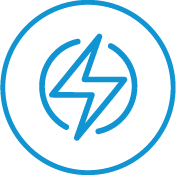What We’re Watching
May 29, 2025
What We’re Watching is your go-to read for background on all NAFEM advocacy efforts, including energy, environment, regulations, supply chain, and taxes, tariffs and trade. What We’re Watching begins with NAFEM’s Federal Advocacy Tracker, a convenient reference list of pending issues with links to docket numbers (where applicable) and comments.
Should your company wish to communicate with state and federal elected officials on these or other topics, the Advocacy Action Center makes it easy to do so. The Center also includes a convenient state policy map for members to search for proposed regulations and legislation potentially impacting their businesses at the state level.
Federal Advocacy Tracker
| Issue | Docket No./Link | Status/Notes | |
 ENERGY ENERGY | |||
| Automatic Commercial Ice Makers | |||
| 1 | DOE proposes energy conservation standards | EERE-2017-BT-STD-0022 | NAFEM comments NAFEM reaching out to agency for update |
| 2 | DOE issued Notice of Data Availability updating its analysis for above NOPR | EERE-2017-BT-STD-0022-0056 | Comment period closed Oct. 25, 2023 |
| Commercial Refrigeration Equipment | |||
| 1 | DOE issued final rule addressing energy-conservation standards | EERE-2017-BT-STD-0007 | DOE delayed effective date to May 20 and sought comments by March 28 Compliance date remains Jan. 22, 2029 Withdrawal of standard under the Congressional Review Act expected once the Senate again takes up the resolution NAFEM also filed a petition with the U.S. Court of Appeals requesting DOE review the rule |
| Walk-in Coolers/Freezers | |||
| 1 | DOE issued final rule addressing energy conservation standards | EERE-2017-BT-STD-0009 | DOE delayed effective date to March 21 and sought comments by March 13 Compliance dates of 2027 and 2028 have not changed Withdrawal of standard under the Congressional Review Act expected to be signed by the President. |
| 1 | EPA released drinking water standards for municipal water systems and organizations that provide their own drinking water, April 2024. | Final PFAS National Primary Drinking Water Regulation | On hold pending litigation Currently calls for 5-year implementation period (2029) |
| 2 | EPA final rule restrictions on the use of certain HFCs, establishes a process for submitting technology transitions petitions, and establishes recordkeeping and reporting requirements. | EPA-HQ-OAR-2021-0643-0026 | Final rule Oct. 5, 2023 Compliance dates vary from Jan. 1, 2025, to Jan. 1, 2028 |
| 3 | Imported or domestically manufactured stand-alone retail food refrigeration units must use a refrigerant with a GWP of 150 or lower | Program overview Final rule fact sheet | Effective Jan. 1, 2025 |
| 4 | The EPA proposes adding 16 individual PFAS and 15 PFAS categories representing more than 100 individual PFAS, to the Toxics Release Inventory. Doing so would identify the PFAS as chemicals of special concern, subjecting their use to more robust reporting requirements, including reporting even for small concentrations. | EPA-HQ-OPPT-2023-0538 | Comment period closed Nov. 7, 2024 |
| 5 | EPA finalizes reporting and recordkeeping requirements for PFAS. The agency also modified the definition of PFAS. Any company that manufactured (including imported) a PFAS for a commercial purpose in any year since January 1, 2011, must report. | EPA-HQ-OPPT-2020-0549 | Final rule issued Oct. 11, 2023 Beginning of compliance submission period delayed to July 11, 2025. |
| 6 | EPA issues pre-publication final rule for the management of certain HFCs and their substitutes | EPA-HQ-OAR-2022-0606 | Pre-publication final rule |
| 7 | EPA proposes ban on all TCE use | EPA-OPPT-2020-0642-8026 | Comment period closed Dec. 15, 2023 |
| 8 | EPA lists final SNAP 26 approved refrigerants | Final rule | Effective July 15 Fact sheet |
| | |||
| 1 | OMB proposes changes to regulatory decision-making and engagement process | OMB-2022-0011 | NAFEM comments Comments closed June 2023. |
| 2 | SEC Climate Change Disclosure Rule | 3235-AN22 | Final rule published March 28, 2024 SEC stayed rule April 4, 2024 pending judicial review |
| 3 | OSHA’s proposed Heat Injury and Illness Prevention in Outdoor and Indoor Work Settings | OSHA-2021-0009 | Comments closed Jan. 14, 2025 |
| 1 | Given the constantly changing nature of the tariff situation, NAFEM updates the Taxes, Tariffs and Trade page of nafem.org weekly. We recommend visiting this page for information and consult with your customs broker for up-to-the-minute tariff information relative to your business and its products. Members also can send questions to advocacy@nafem.org. | ||
Other items NAFEM is tracking

ENERGY
California considering efficiency standards for commercial fryers
The California Energy Commission (CEC) v issued a Request for Information (RFI) on potential energy efficiency standards for commercial fryers and to assess their prevalence and performance in the commercial food service industry. Comments are due by June 23.
States setting energy-efficiency standards
The following states have energy-efficiency standards in place or pending for a variety of commercial foodservice equipment: California, Colorado, Connecticut, Washington D.C., Maine, Maryland, Massachusetts, Nevada, New Hampshire, New Jersey, New York, Oregon, Rhode Island, Vermont and Washington1.
States require manufacturers to register with appliance standards databases
- The State Appliance Standards Database (SASD) is an important registration body for commercial food equipment and other manufacturers, with Massachusetts, Maryland, New Jersey, New York and Rhode Island requiring registration of various products, including commercial dishwashers, fryers, hot food holding cabinets, ovens and steam cookers. These states may issue financial penalties for products sold within their borders that don’t meet minimum energy-efficiency or are unregistered.
- California also requires manufacturers to certify the performance of refrigeration products sold in the state via its Modernized Appliance Efficiency Database System (MAEDbS). The two databases do not share information, so manufacturers must register with both databases to sell products in the covered states.
ENERGY STAR® expands component inspection program
- The ENERGY STAR component inspection program expands to electric cooktops in 2025. Check here or contact advocacy@nafem.org for more information. Additionally, while there is speculation of EPA phasing out ENERGY STAR, NAFEM continues to be a proponent of the program.
- The current program covers commercial steam cookers; dishwashers; convection, combi and gas-rack ovens; commercial electric cooktops; commercial coffee and tea brewers; fryers; griddles and hot food holding cabinets.

ENVIRONMENT
PFAS reduction efforts active at federal and state levels
Per- and polyfluoroalkyl (PFAS), or so called “forever chemicals,” are increasingly the focus of federal and state reduction efforts and outright bans.
- The Complex Products Manufacturers Coalition overview of current PFAS legislation at the international federal and state level is updated monthly and helps members keep track of myriad state activities.
Canada to require PFAS reporting
Beginning this year, Canada will require manufacturing and other facilities to report the use of PFAS to the National Pollutant Release Inventory to improve understanding of how PFAS are used in Canada, help evaluate possible industrial PFAS contamination, and support efforts to reduce environmental and human exposure to harmful substances.
Canada also is seeking comments on its proposal to add and regulate PFAS as a class under its Environmental Protection Act, rather than treating each substance individually. Additionally, Canada is seeking feedback on its three-phase risk-Management Approach that seeks PFAS alternatives and evaluates social-economic as well as technical considerations. Comments were due May 7, but NAFEM sought and secured an extension until August 5 to respond.
EPA considers deregulations
- U.S. Environmental Protection Agency (EPA) Administrator Lee Zeldin announced the agency will consider 31 deregulations as part of the Trump administration’s agenda to give the states more decision-making power.
EPA provides HFC phasedown data
- EPA updated hydrofluorocarbon (HFC) data – including imports, exports, inventory and destruction, as well as allowance transfers and expenditures – is available on the EPA HFC Data Hub.
Extended producer responsibility (EPR) efforts in states
- EPR efforts hold producers responsible for the lifecycle of their products. Multiple states have approved EPR plans, including Maine, Oregon, California, Colorado, Washington, New Jersey and Minnesota thus far primarily aimed at recycling and consumer, single-use plastic as well as packaging.
- There has been no further activity on NY Senate Bill 01459 and Assembly Bill A2164 introduced January 2025 which would require the state to establish an extended producer responsibility plan for household appliances and regulated refrigerants by Dec. 31, 2027.
California climate disclosure bills could impact members
- California is implementing two climate disclosure bills. Impacted companies include those that operate and/or sell in the state and meet other requirements highlighted below:
- SB 261, Greenhouse Gases: Climate-Related Financial Risk, applies to public and private companies with annual revenues of $500 million or more that do business in California. Companies are to complete the Task Force on Climate-Related Financial Disclosures and post to their websites before Jan. 1, 2026.
- SB 253, Climate Corporate Data Accountability Act, applies to public and private companies with annual revenues of $1 billion or more that do business in California. Companies are to report Scope 1 and 2 emissions in 2026 and Scope 3 emissions in 2027.
Fuels Task Group discusses continued decarbonization efforts
- Decarbonization efforts continue at the state, federal and international levels and the industry should anticipate continued discussion and regulatory requirements intended to phase out the use of fossil fuels and natural gas. For example:
- The New York ban on natural gas and other fossil fuels applies to new buildings shorter than seven stories by 2026, and taller buildings by 2029.
- More than 100 U.S. cities have moved to restrict gas-powered appliances. Most of these bans focus on new construction. Members should check local requirements as this is an evolving situation.
- The U.S. Department of Energy (DOE) and California Energy Commission (CEC) are investing in strategic electrification research.
Update on EU/UK F-gases
- NAFEM has been notified by the U.K. Foodservice Equipment Association that the U.K. does not have any timelines for implementing changes to its F-gas regulations that currently do not follow the EU F-gas regulations. Manufacturers have been urged to find alternative refrigerants to comply with the EU F-gas regulations in 2026.
Washington State Lead in Cookware Law
- Gov. Ferguson signed Washington State SB 5628 concerning lead in cookware. The bill, which incorporates industry feedback, gives manufacturers time to lower the ppm of lead in aluminum and brass cookware before new standards go into effect. Final legislation excludes large appliances, such as refrigerators and ranges, which were in earlier drafts. Thanks to NAFEM member Wood Stone Corp., the Association of Home Appliance Manufacturers (AHAM) and the Cookware Sustainability Alliance (CSA) for joining NAFEM in working with elected officials on this positive outcome.

REGULATIONS
Pay transparency laws proliferating
- Effective Jan. 1, employers with 30 or more employees in Minnesota must include a pay range or fixed pay rate in all job posts. Similar laws to reduce gender and racial wage gaps already exist in California, Colorado, Connecticut, Hawaii, Illinois, Maryland, Massachusetts, Nevada, New York, Rhode Island, Vermont, Washington and the District of Columbia.
New efforts addressing potential AI discrimination
- Colorado became the first U.S. state to govern artificial intelligence (AI) when Governor Polis signed Senate Bill 24-205. The law takes effect in 2026 and requires those developing and using the technology to ensure that AI-generated hiring, banking and housing decisions avoid “algorithmic discrimination.”
- Numerous states have or are considering similar AI-related restrictions.
California Prop 65 labeling requirements require ongoing monitoring
- California’s Proposition 65 – The Safe Drinking Water and Toxic Enforcement Act – requires companies to provide warning labels to notify people of exposure to more than 1,000 chemicals known to cause cancer, birth defects or other reproductive harm. While NAFEM regularly reports on proposed changes, members should closely monitor the Prop 65 changes impacting their businesses.
Prevention of heat-related illnesses and injuries addressed in California, Illinois rules; OSHA considering similar regulations
- Members should review California , Illinois and proposed federal regulations aimed at reducing heat-related illnesses and injuries:
- California’s Heat Illness Prevention in Indoor Places of Employment rule went into effect July 23. The law applies to indoor environments when the temperature reaches 82° F. California already has regulations addressing those working in outdoor heat.
- Illinois’ Workplace Extreme Temperature Safety Act (SB2501) mandates that the Director of Labor adopt rules for excessive heat and cold standards, with a requirement to establish an occupational temperature-related illness and injury prevention plan by January 1, 2026 https://ilga.gov/ftp/legislation/104/SB/10400SB2501.htm
- See the Federal Advocacy Tracker above for updates on the Occupational Safety and Health Administration’s (OSHA) Heat Injury and Illness Prevention in Outdoor and Indoor Work Settings proposed rule. Comments were due Jan. 14 and a virtual public hearing on the proposed rule will be held June 16.

SUPPLY CHAIN
Investigation underway on transit “choke points”
- The Federal Maritime Commission (FMC) launched an investigation into transit constraints that may be creating unfavorable shipping conditions for U.S. foreign trade. “Choke points” being studied are the Suez Canal, Panama Canal, English Channel, Malacca Strait, Singapore Strait, Northern Sea Passage and Strait of Gibraltar. FMC is looking into laws, regulations and practices of foreign governments or the practices of foreign-flag vessels owners or operators.
Know your supply chain: Restricted entities listed on government database
- The International Trade Administration (ITA) maintains the Consolidated Screening List (CSL) of parties with which the U.S. restricts certain exports, reexports or transfers of items, including those addressed under the Uyghur (China) Forced Labor Prevention Act (UFLPA), Russia/Belarus sanctions and others. ITA updates the list daily, and email updates are available at the link above.

TAXES, TARIFFS & TRADE
Tariff updates available at nafem.org
- Given the constantly changing nature of the tariff situation, NAFEM updates the Taxes, Tariffs and Trade page of nafem.org weekly. We recommend visiting this page for information and consult with your customs broker for up-to-the-minute tariff information relative to your business and its products. Members also can send questions to advocacy@nafem.org.
Tax reform a top NAFEM priority
- If Congress fails to pass legislation to extend or make permanent the tax reform provisions from the 2017 Tax Cuts and Jobs Act, it will result in the largest tax increase in U.S. history. The NAFEM Advocacy Action Center makes it easy to join NAFEM in reaching out to elected officials to relay how important these provisions are to your business, competitiveness and the overall U.S. economy, particularly with the uncertainty due to tariffs.
Commerce investigating security of semiconductors and related products
- The U.S. Department of Commerce opened a brief three-week comment period (April 16 – May 7) on its Section 232 investigation of the security risks of imports of semiconductors, semiconductor manufacturing equipment and their derivative products. The investigation also covers semiconductor substrates and bare wafers, legacy chips, leading-edge chips, microelectronics and manufacturing equipment components. The final report is due to President Trump Dec. 27, although the administration has stated its intent to move at a faster pace.
Hundreds of sanctions and restrictions remain in place against Russia and Belarus
- Hundreds of sanctions and restrictions are in effect against Russia and third parties allegedly helping Russia evade sanctions. The departments of Commerce, State and Treasury continue to act against individuals and organizations. NAFEM members should continue to scrutinize their supply chains.
Focus on shipments of goods produced with Uyghur labor continues
- U.S. Customs and Border Protection (CBP) continues to closely watch for goods covered under the Uyghur (China) Forced Labor Prevention Act (UFLPA) that largely prohibits importing any items mined, produced or manufactured wholly or in part in the Xinjiang Uyghur Autonomous Region of the People’s Republic of China. To clarify the UFLPA, CBP published FAQs, best practices and guidance.
OTHER TOPICS?
If there is a topic you would like NAFEM to address, please contact us at advocacy@nafem.org.